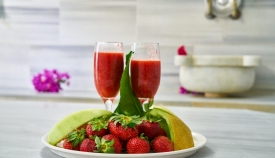-
 Read time : 3 mins
Read time : 3 minsYou Shouldn’t Walk on This Side of the Road
(Photo by Andrea Piacquadio)
It was a calm Saturday morning, and I had some rare free time. By 5:30 a.m., the dawn was still softly lighting up the world around me. I put on my running shoes, excited to enjoy this quiet start, and began a light jog down the familiar path on the left side of the road, as I always did. The air felt fresh, and the streets were mostly empty, with just a few early risers.
As I jogged, I enjoyed the sound of my footsteps on the cool pavement. However, less than a hundred meters into my run, a sudden rush interrupted the stillness of the morning. I hardly had a moment to react before a motorcycle sped past me from behind, brushing against my arm. The wind hit my face, and I felt a rush of adrenaline as I stumbled forward, my heart racing from the narrow escape. The loud engine quickly faded away, leaving me momentarily stunned.
In those few seconds, I went over the incident in my mind. If I had just stepped a little to the left or if the motorcyclist had been distracted for a moment, the situation could have been much worse. I stood by the side of the road, trying to catch my breath and process what had just happened. My childhood lessons played back in my mind—always walk on the left side of the road. But in that moment, I began to wonder if that was truly the safest choice.
Pedestrian Safety: A New PerspectiveThat close call made me think that while the law requires driving on the left side in my home country, it might actually be safer for pedestrians to walk on the right side of the road. Walking against traffic allows us to see approaching vehicles, which gives us a better chance to react to unexpected events—something I couldn’t do when facing away from the cars.
The Science Behind Facing Traffic for Pedestrian Safety
From a scientific perspective, walking against traffic offers what is called "visual awareness." Research shows that pedestrians react faster and more accurately when they can see oncoming vehicles, helping them avoid potential dangers. Our brains process what we see quicker than what we hear, meaning that even when you hear a vehicle, your response time might be slower than if you could see it coming. This visual awareness could have helped me avoid that close call because I would have seen the motorcycle and moved out of the way.
SHOP NOW
After my experience, I made some changes to my morning routine to avoid another near miss. Here are some important safety tips for anyone who enjoys jogging or walking on busy roads:
1. Always walk or jog facing traffic: This allows you to stay aware and react if needed.
2. Be visible, especially in low light: Early mornings can be dark, making it harder for drivers to see you. Wear bright colors or reflective clothing to ensure you are noticed from a distance.
3. Limit distractions: It's easy to want to listen to music while jogging. However, staying alert to your surroundings can save your life. If you need music, consider using just one earbud or turn the volume down.
4. Stick to safer routes: Whenever possible, use sidewalks or designated paths. If there are no sidewalks, choose roads with lighter traffic for a safer and more relaxed experience.
5. Be extra careful at intersections and curves: These spots can make it hard for both drivers and pedestrians to see well. Make eye contact with drivers at intersections to ensure they notice you, and be ready to stop if needed.That Saturday morning experience was a close call, but it also taught me a valuable lesson about awareness and safety. Small adjustments can make a big difference, helping us enjoy our morning workouts with peace of mind.
You might like
You Shouldn’t Walk on This Side of the Road
WORLD NEWS
Make Money
The Best Online Platforms for FreelancersFriday, January 3, 2025 - 21:30How To Easily Make Money Taking Online SurveysMonday, March 2, 2020 - 04:31The Importance of Financial LiteracySunday, March 1, 2020 - 03:35These are 5 Easiest Ways to Make Money OnlineSunday, March 1, 2020 - 03:30Fashion
Wednesday, March 1, 2023 - 03:30As the fashion industry constantly evolves, each year brings its own set of trends and influences. Let's explore the key differences ...INSPIRATION
amz-002
Detox Your Body
Friday, March 6, 2020 - 13:40Detox drinks have gained popularity in recent years as people seek ways to cleanse their bodies and support their weight loss journey.amz-001
Paserba - Life Inspiration, Health, Wealth and Quality Lifestyle
Recent posts
American Airlines Flight 5342 Collides with Helicopter Over Potomac River; Search and Rescue Operations IntensifyFriday, January 31, 2025 - 01:01DeepSeek's Rapid Rise: A New Contender in the AI IndustryMonday, January 27, 2025 - 20:01Why HIV Has No Cure Yet: The Science Behind the StruggleTuesday, January 14, 2025 - 12:31Choosing the Right Baby Car Seat: What You Need to KnowThursday, January 9, 2025 - 13:45How I Dropped Pounds Without Starving or OvertrainingWednesday, January 8, 2025 - 11:23
Tags



















